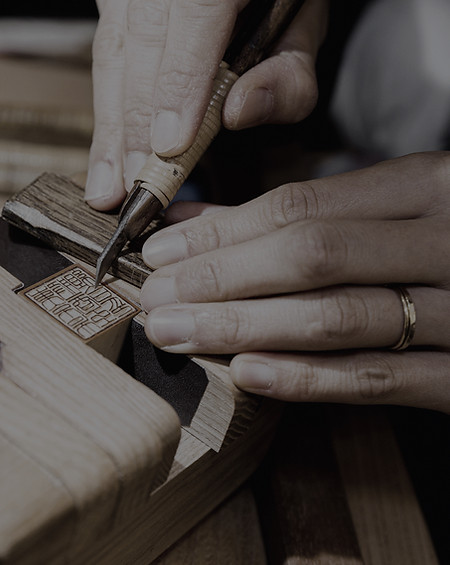Artist History
The perfect, Personalized Kamakura Keepsake

The ultimate craftsmanship
A long-established store that has been in business for 80 years
Third-generation owner
1951: First owner opened store
1978: Won gold prize at National HANKO Competition
1975: Second-generation owner opened store
2016: Third-generation owner opened store in Kamakura
2019: Registered as national skilled craftsman HANKO engraving craftsman
2022: Certified as Kamakura City Special Project
2023: National Crafts Grand Prix Grand Prize (Minister of Economy, Trade and Industry Award)
2024: Awarded by the mayor of Kamakura City and the mayor of Nice, France
Kamakura Hanko is one of the most trusted Japanese Hanko seal brands in Japan!
・Winner of the Grand Prize for Crafts
・Awarded at the HANKO Exhibition
・Produced HANKO for ministers, members of parliament, mayors, etc.
・Produced HANKO for champion sumo wrestlers
・Produced goshuin HANKO for temples












Hanko Today,
Hanko Tomorrow
Despite concerns that the Hanko may become obsolete as banks increasingly accept handwritten signatures and digital verification methods, the Japanese Hanko remains popular. Critics argue that the Hanko is part of an outdates system. However, its enduring presence-and its likely continuation into the future-stems from its deep integration into Japanese culture. To date, Hanko are used during pivotal life events such as submitting marriage certificates, registering births, purchasing vehicles, buying houses, and even certifying death certificates. Consequently, Hanko are becoming increasingly popular as gifts for weddings, the coming of age day, and other significant celebrations. Given its association with major life milestones in Japan, the Hanko is unlikely to disappear anytime soon.


Kamakura Hanko Craftsmanship
Originally established in 1951 in the Kansai region by Satoshi Tsukino, Kamakura Hanko is now run by Third Generation Owner Mitsuhiro Tsukino. Passionate about preserving and sharing Hanko Culture, Mitsuhiro carves custom Hanko by hand, just five minutes away from Kamakura Station. Kamakura Hanko procures its seals directly from a partner in Yamanashi Prefecture, the largest producer of Hanko stock in the country, and offers over 30 types of high quality materials ranging from stone to horn and wood. Additionally, the store features a selection of over 100 Hanko cases crafted by Yamanashi artisans, providing designs that suit nearly any style.

The History of the Japanese Hanko (seal)
The culture of using seals originates from the 5th millennium BC Mesopotamia and made its way to Japan by the year 57 AD, although it likely arrived even earlier. Following the enactment of the Taiho Code-an administrative and penal code-in 701 AD, the Japanese Imperial Family began using Hanko Seals for important contracts. Each emperor had a specific seal created exclusively for them. By the late Nara period around the year 750 AD, the aristocracy also began acquiring seals, with use extending to the Samurai during the Kamakura period.
The widespread use of Hanko across Japan was however solidified during the Meiji period (1868-1912) when a new law mandated a unified national system of certification. Today, the Hanko is a cultural heirloom passed down through generations and remains a crucial element for confirming 'will' and 'responsibility' for transactions between the Government, corporations and individuals.

%20-%20Gmail.png)
